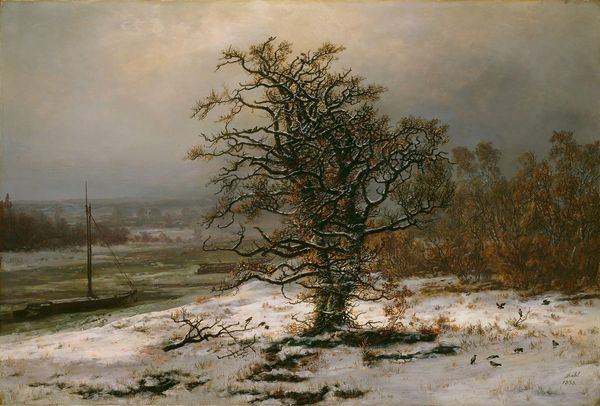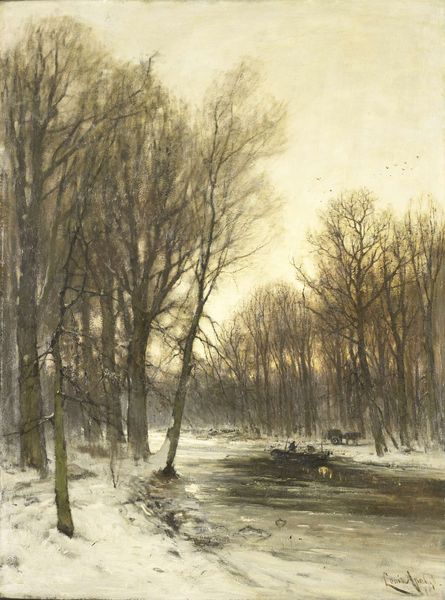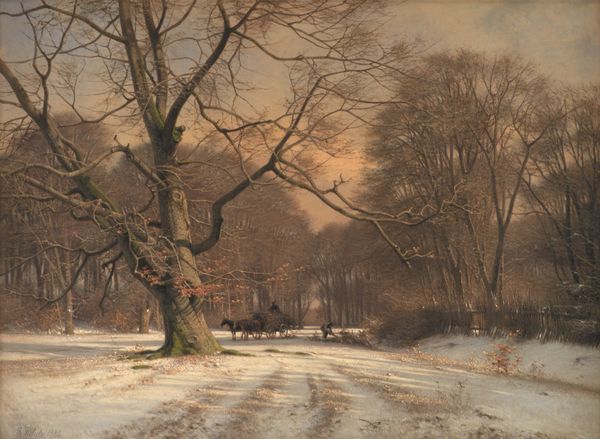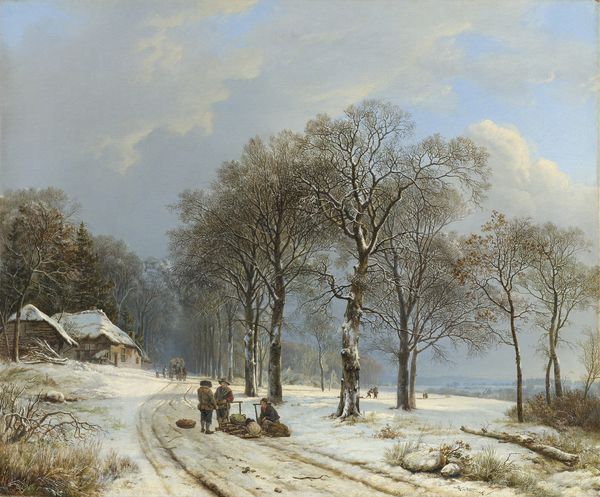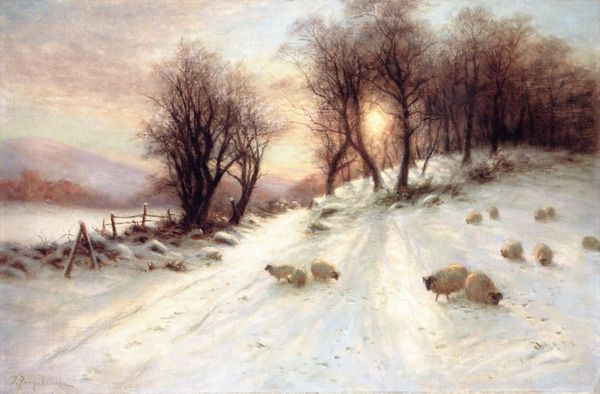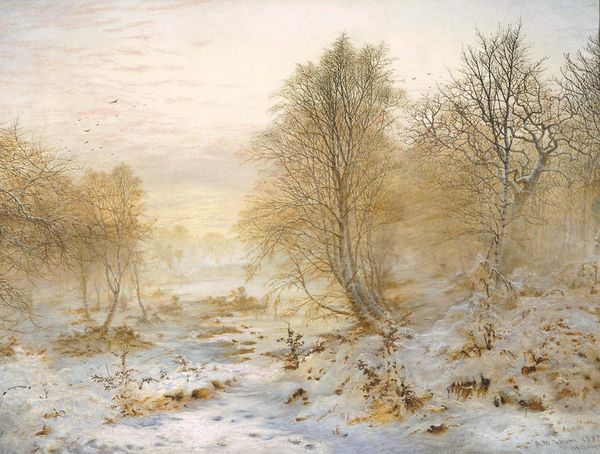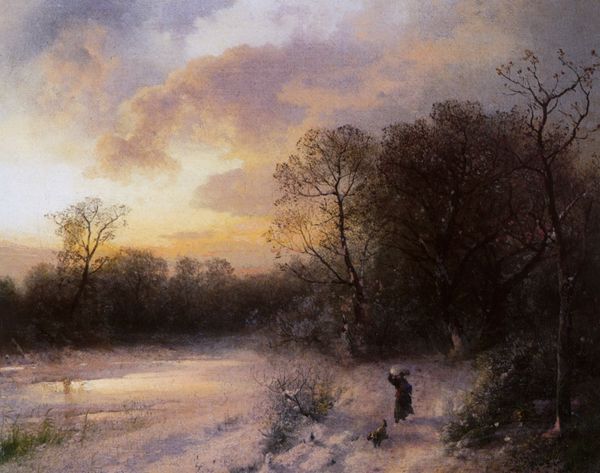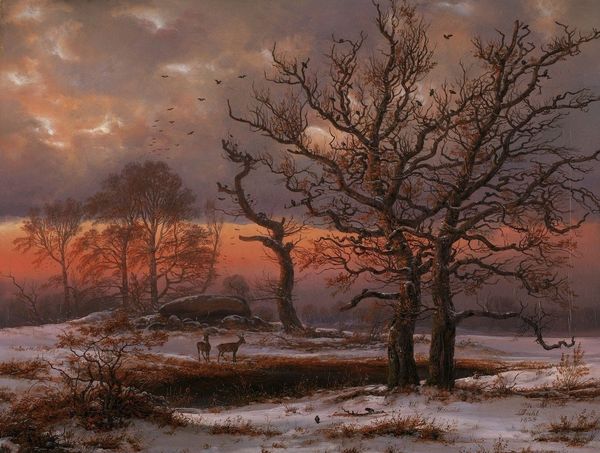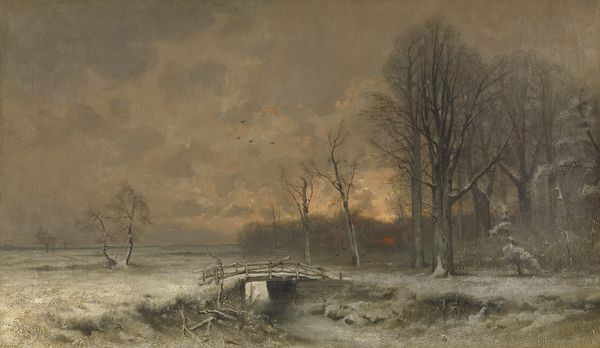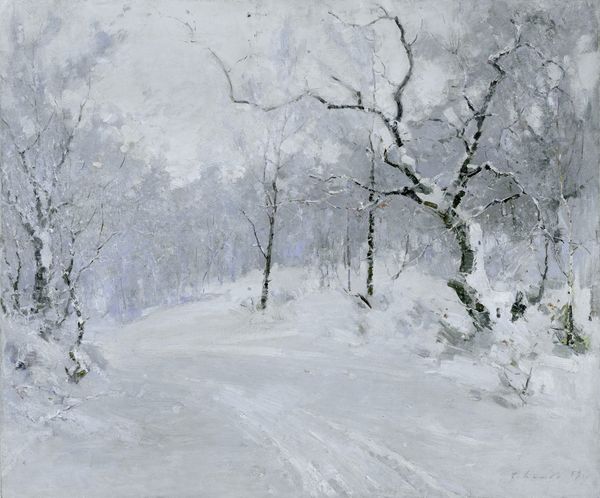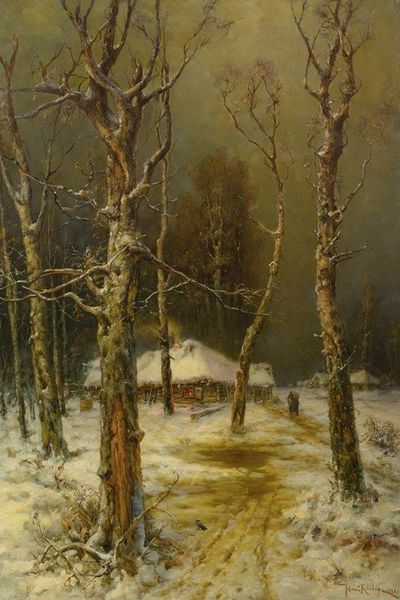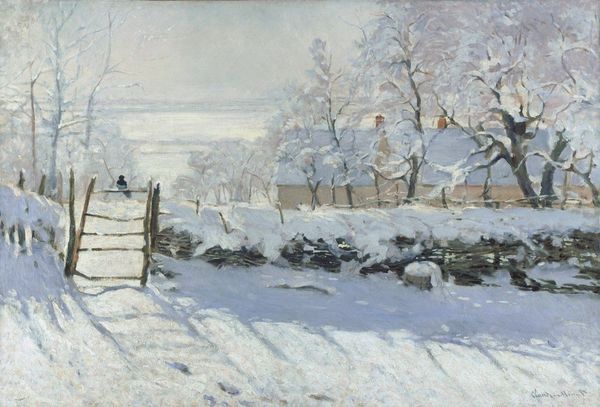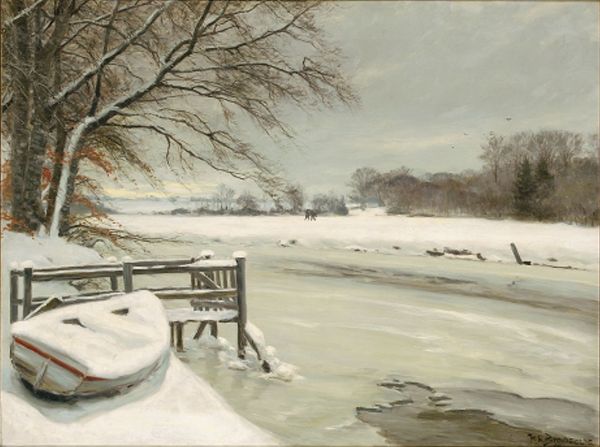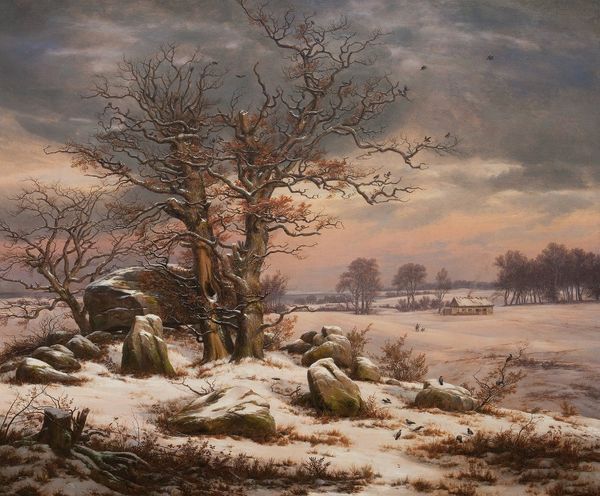
Dimensions: height 92 cm, width 121 cm, depth 16.5 cm
Copyright: Rijks Museum: Open Domain
Editor: This is "A January Evening in the Woods of The Hague," painted by Louis Apol around 1875. It’s oil on canvas, and it's currently hanging in the Rijksmuseum. I’m immediately drawn to the stillness of the scene, the heavy snow… It makes me wonder about the labor involved in depicting it so realistically. What can you tell me about Apol’s choices in bringing this landscape to life? Curator: The choice of oil paint itself is crucial. It allows Apol to meticulously capture the textures of the snow, the bark of the trees. But more than that, consider the "plein-air" designation. This suggests Apol engaged with the landscape directly, battling the very elements he depicts. Doesn’t it make you wonder about the experience of being in the woods in January and trying to reproduce that on canvas? What limitations that weather and time might have put on him, but also the opportunity? Editor: Absolutely, that’s fascinating. I hadn't considered the constraints imposed by the actual environment. How might the availability, or cost, of pigments also shaped Apol's palette and composition? I guess painting such a landscape wasn't quite as easy and "free" as I’d imagined. Curator: Exactly. The muted colors aren't simply an aesthetic choice; they are a consequence of the material reality. What colors were accessible, how were they produced? Consider, too, the social context. Who was commissioning such landscapes, and what was their relationship to the land and resources it represented? This image wasn't created in a vacuum; it's the product of a complex interplay of material conditions and social forces. Editor: It definitely shifts my understanding of the painting away from just "pretty landscape" towards a consideration of its material and historical grounding. Thanks! Curator: And that shift helps us move toward a fuller and more nuanced picture of not just the work itself but its position as a constructed thing and also within broader art history.
Comments
No comments
Be the first to comment and join the conversation on the ultimate creative platform.
